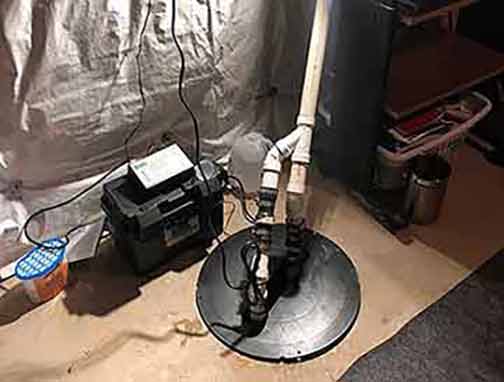
Having a functional sump pump is essential for keeping your basement dry and preventing costly water damage. However, like any mechanical equipment, sump pumps can wear out over time and may need replacement. It is crucial to be aware of the signs that indicate your sump pump is no longer performing optimally, as failure to address these issues promptly can lead to flooding and other water-related problems.
In this article, we will discuss the top signs that indicate your sump pump needs replacement. Whether you are a homeowner or a property manager, understanding these signs will help you take the necessary steps to ensure your basement remains protected from water damage.
1. Frequent Cycling
A sump pump that cycles on and off frequently without any significant water inflow is often a sign of a malfunctioning float switch. The float switch is responsible for activating the sump pump when the water level rises above a certain threshold. If the switch becomes stuck or damaged, it can cause the sump pump to turn on and off frequently, even when it is not necessary. This constant cycling can put unnecessary strain on the pump and significantly reduce its lifespan. If you notice frequent cycling, it is advisable to have a professional assess the issue and determine if a replacement is needed.
2. Excessive Noise
While some noise is normal when a sump pump is in operation, excessive or unusual noises can indicate underlying problems. Grinding, rattling, or clunking sounds may be indicative of a failing motor, damaged impeller, or worn-out bearings. As these parts deteriorate over time, the sump pump’s efficiency and effectiveness are compromised. If you notice any new or unusual noises coming from your sump pump, it is essential to have it inspected by a professional to determine if replacement is necessary.
3. Age of the Pump
Just like any other appliance, sump pumps have a limited lifespan. On average, a sump pump can last anywhere between 7 to 10 years. If your pump is nearing the end of its expected lifespan, it is wise to consider replacement, even if you haven’t observed any specific issues yet. Waiting for a sump pump to fail before replacing it can result in unexpected basement flooding and water damage. By proactively replacing an aging sump pump, you can ensure that your basement remains well-protected.
4. Visible Rust or Corrosion
Inspecting the outward condition of your sump pump can provide important clues about its overall health. Rust or corrosion on the pump’s exterior is a clear sign of moisture damage and can point to internal problems as well. Components such as the motor, impeller, or switch may be compromised due to prolonged exposure to water and rust. If you notice any signs of corrosion or rust on your sump pump, it is advisable to consult a professional to determine replacement options.
5. Lack of Power Backup
A power outage during a severe storm can render a sump pump useless if it solely relies on electricity. Without a backup power source, water can quickly accumulate in your basement, causing extensive damage. If your current sump pump does not have a battery or generator backup system, it may be time to consider upgrading to one that provides additional protection against power outages. This ensures that your sump pump can continue operating even during electrical interruptions.
6. Inconsistent Pump Operation
If your sump pump fails to activate when water levels rise or if it fails to pump out water efficiently, it may be a sign of mechanical or electrical issues. Inconsistent pump operation can be attributed to a faulty switch, a clogged or damaged discharge pipe, or a worn-out impeller. Regular maintenance and inspection can help mitigate some of these problems. However, if your sump pump continues to experience inconsistencies in its operation, it is best to consult with a professional to determine if a replacement is necessary.
7. Water Leaks or Excessive Moisture
Visible water leaks or excessive moisture in or around your sump pump may indicate malfunctioning seals or cracks in the pump or discharge pipe. These issues can lead to water seepage and compromise the pump’s ability to effectively remove water from your basement. If you notice any signs of leakage or excessive moisture, it is crucial to address the problem promptly to prevent further damage and potential mold growth. You may need to replace your sump pump to rectify these issues and ensure effective water removal.
Conclusion
Regular maintenance and inspection of your sump pump are vital for ensuring it remains in good working condition. However, if you notice any of the signs mentioned above, it is recommended to consult with a professional sump pump technician to determine if a replacement is necessary. Being proactive in addressing potential sump pump issues can help prevent basement flooding, costly water damage, and the inconvenience of dealing with such emergencies. Remember, a well-functioning sump pump is your first line of defense in keeping your basement dry and protected.



Recent Comments